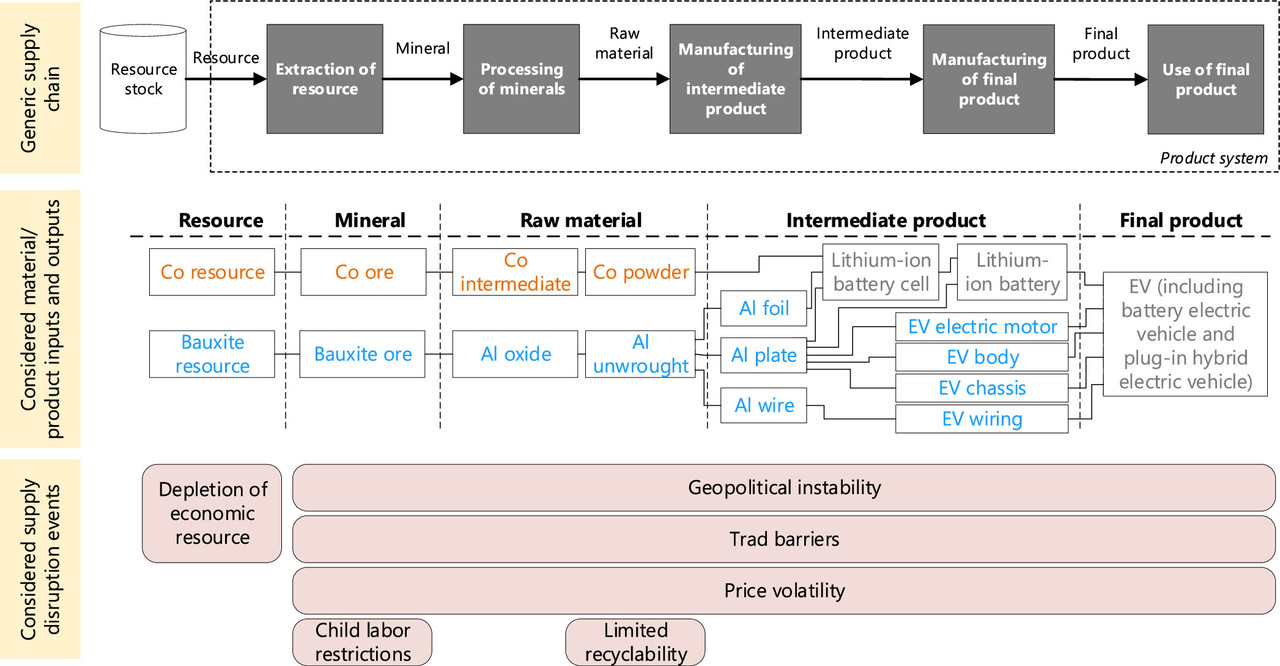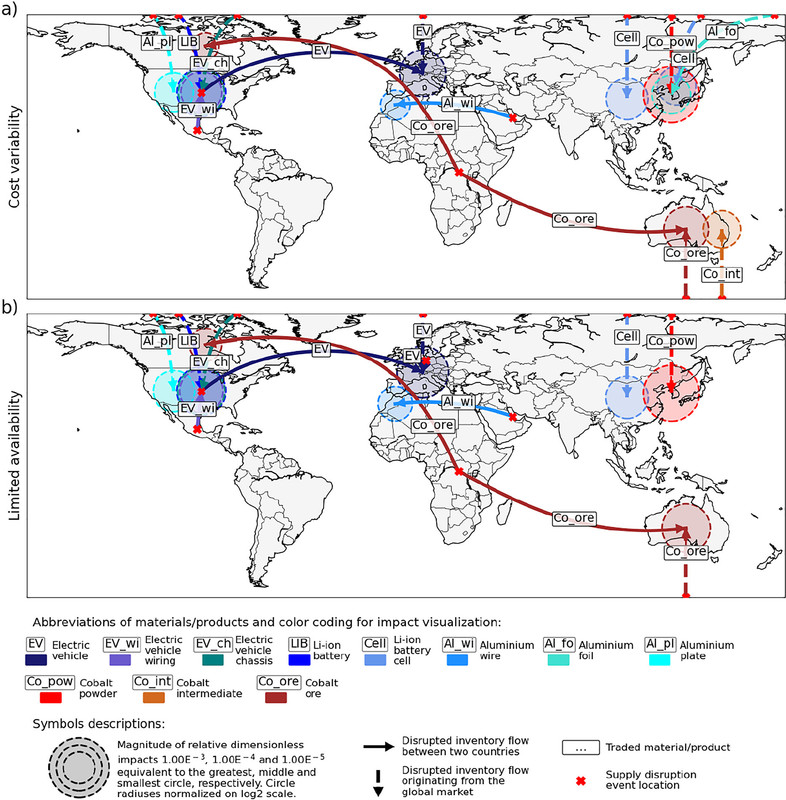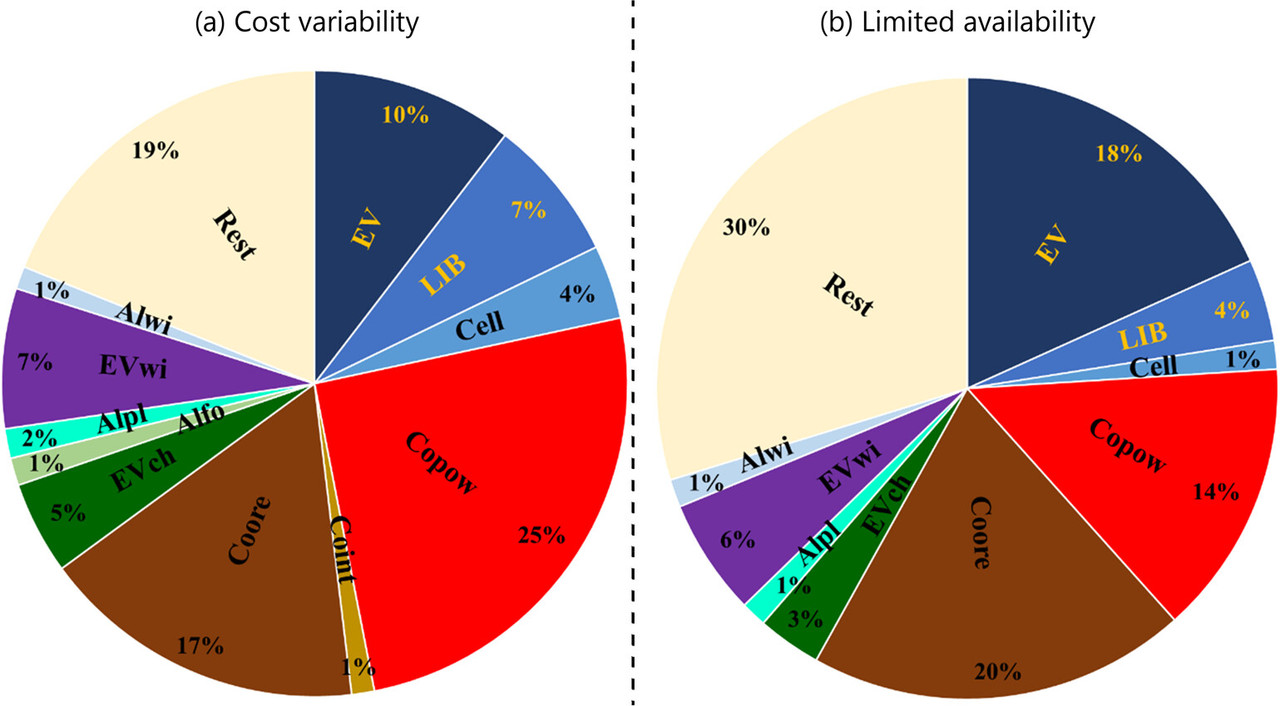Science
Related: About this forumAssessing the Supply Chain Risks of Electric Vehicles and Their Sustainability.
The paper to which I'll refer in this post is this one: Assessing Short-Term Supply Disruption Impacts within Life Cycle Sustainability Assessment─A Case Study of Electric Vehicles Marcus Berr, Roland Hischier, and Patrick Wäger Environmental Science & Technology 2023 57 (48), 19678-19689
This paper is available to the public to read for free, a gift to society (for those interested in sustainability) from the American Chemical Society.
There is a myth that electric cars, and electric things in general, are all "green." It's a myth because electricity, like most of the world's energy supply, is largely provided by dangerous fossil fuels, despite all the marketing and pretense that claims that so called "renewable energy" is a significant provider of energy.
It isn't. So called "renewable energy" is a reactionary land intensive and material intensive expensive and disastrous failure.
The article here is about material intensity of a popular, but I think disingenuous, putatively "green" device, the electric car.
Now, I have been driving a hybrid car which was recently completely demolished - it was less than a year old - in an accident when a young woman ran a stop sign. I waited six months to get the car in the first place, and I am now in my second month of waiting for its replacement to come off back order - I expect to receive the car before the end of the year.
Since the supply chain for a hybrid car is similar to that of an electric car, I have direct experience of what I speak.
Note too, that as a critic of the car CULTure in general, and as a critic of the moral costs of batteries, I can easily and irrefutably be characterized as a hypocrite, to which I can only offer a week defense, that a hybrid car is slight less obnoxious than an electric car, since a hybrid car recovers otherwise waste exergy, specifically that of braking, going down hill - the car will not exceed the speed to which it is set on cruise control - and, to the extent it runs when stopped, idling. Thus the thermodynamics of the system, involving fewer energy transformations subject to the 2nd law of thermodynamics, is less odious from my perspective.
An electric car, by contrast, consumes exergy charging off a grid, as electricity on the grid is a thermodynamically degraded form of energy already, and by storage and discharge, involves far more losses to entropy.
Again, the paper is open sourced, but a few excerpts and telling graphics are in order:
Mechanisms leading to resilience in supply chains have been identified by Sprecher et al. (12,13) using a case study from the 2010 rare earth crisis. These mechanisms include, for example, increases in supply diversity, improvements in material properties, and substitution. In another study, Sprecher and colleagues (14) identify stockpiling as a suitable response option to supply disruptions caused by unexpected events for metals produced as coproducts.
To identify measures suitable for mitigating supply risks, potentially disrupted flows along supply chains first need to be anticipated. Here, criticality assessment is useful, as it allows for assessing the relative importance of supply disruptions for materials/products. Several critical studies have already been performed with regard to the electromobility sector. For example, Helbig et al. (15) have used the criticality assessment approach developed by Tuma et al. (16) to assess the supply disruption impacts for raw materials used for different traction batteries...
While the reference to the "Democratic Republic" of Congo refers only to political instability - it's a bit of sugar coating - the real issue is moral, human slavery.
Every time I sit in my swell hybrid car (when it comes) and push the ignition button, I am participating in human slavery, and to the extent I ignore that I am worse than morally obtuse.
A few graphics:

The caption:

The caption:

The caption:
I don't expect we'll stop kidding ourselves; experience teaches we will do everything in our power to avoid doing so, but there will be hell to pay, there is hell to pay.
Have an enjoyable weekend.